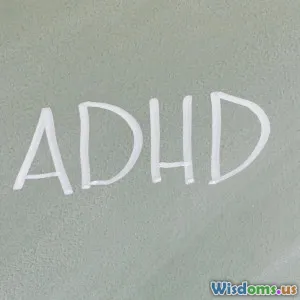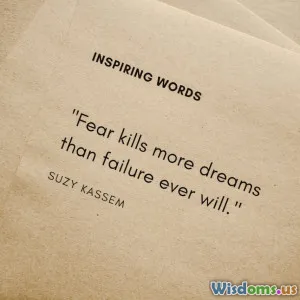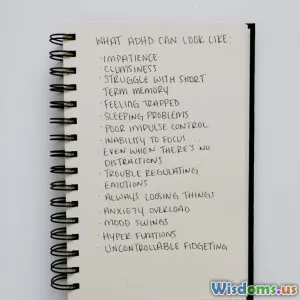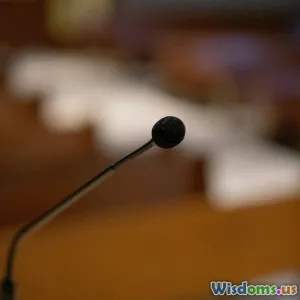
Exploring the Psychology Behind Magic
8 min read Uncover the fascinating psychology behind magic and how illusions captivate the human mind. (0 Reviews)
Exploring the Psychology Behind Magic
Magic is more than just flashy tricks and grand illusions; it is a sophisticated interplay between human cognition and perception. Beneath the obvious spectacle lies a fascinating psychological landscape that explains why magic captivates, surprises, and mystifies audiences worldwide. This exploration will unearth the mental frameworks behind illusions, unravel the cognitive biases magicians exploit, and reveal how magic elegantly models the quirks of the human mind.
The Allure of Magic: Why We Are Intrigued
At first glance, magic seems to defy logic—coins vanish, cards appear out of thin air, and people float effortlessly. But why do we feel such captivating wonder? Psychologist Gustav Kuhn explains that magic commands attention because it creates expectation violations; our brains anticipate continuity but are confronted instead by abrupt anomalies. These unexpected surprises engage brain regions responsible for prediction error and elevate emotional response, intensifying awe.
Moreover, our instincts are wired to detect deception and danger, which is why magic paradoxically feels thrilling yet safe. The tension of uncertainty combined with a guaranteed resolution stimulates dopamine release, making the experience enjoyable on both cognitive and emotional levels.
Perception Faults: How Magicians Exploit Human Limitations
Misdirection: Commanding Attention
One of the core techniques magicians employ is misdirection—intentionally guiding the audience’s attention away from the secret move. Studies in cognitive psychology often illustrate that human attention is a bottleneck; we can only actively focus on a handful of elements simultaneously. Experiments like the famous "Invisible Gorilla" highlight inattentional blindness, where observers fail to see an unexpected stimulus when engrossed in a task.
Magicians skillfully manipulate this by embedding critical sleights in the periphery while drawing focus elsewhere, such as an animated gesture or a humorous comment. For example, during a card trick, a magician might engage the audience with an elaborate story or eye-catching flourish, ensuring their sleight goes unnoticed.
Change Blindness: The Magic of Overlooked Detail
Change blindness occurs when alterations in a visual scene go undetected by the observer, especially if the changes coincide with visual disruptions. Magicians use this vulnerability by switching objects dramatically but smoothly, banking on the brain’s failure to register subtle shifts during distractions. For instance, when a magician replaces one ball with another under a cup, the audience’s failure to notice the change is a direct byproduct of this psychological blind spot.
Cognitive Schema and Expectations
Magic also brilliantly preys on our mental schemas—patterns that help us predict everyday events. When magicians establish certain contexts or narratives, they set expectations that prime the brain’s anticipatory frameworks. The illusion then shatters these expectations, producing surprise and delight.
Take the classic “vanishing dove” trick. The audience naturally expects the bird to remain visible and still due to their schema of a bird’s physical reality. When a sudden disappearance happens, it triggers a cognitive dissonance that must be resolved by the spectator’s mind, which makes the experience intoxicating and memorable.
Neuroscience of Magic: Brain Regions Engaged
Brain imaging studies reveal that watching magic activates not only the visual cortex but also areas involved in executive function, decision-making, and theory of mind—regions linked to understanding others’ intentions. This indicates that magic performance is a complex social cognitive event, where spectators actively try to infer possible sleights or tricks.
A 2015 study published in Frontiers in Human Neuroscience showed that observing magic illusions elevates activity in the dorsolateral prefrontal cortex, a region implicated in problem-solving, highlighting our brain’s struggle to rationalize contradictory sensory evidence.
Historical Context: Psychological Insights Through Ages
From ancient conjurers in Egypt to modern stage magicians like David Copperfield or Derren Brown, magic has always involved exploiting psychological principles, sometimes intuitively. Early magicians understood how spectacle, timing, and narrative enhance effect. Brown, a contemporary mentalist, explicitly incorporates principles of suggestion, social compliance, and subconscious influence—showing the maturation of magic into applied psychology.
Practical Implications: Beyond Entertainment
Understanding the psychology behind magic carries wider implications.
-
Education: Magic tricks can be used in classrooms to teach concepts like attention, perception, and critical thinking. Demonstrating change blindness or misdirection hands-on enables experiential learning.
-
Neuroscience and Psychology Research: Magic paradigms provide controlled yet naturalistic frameworks to study cognition, attention limits, and consciousness.
-
Marketing and Advertising: Brands utilize similar principles of surprise, narrative framing, and visual misdirection to engage consumers emotionally and retain interest.
-
Therapeutics: Magic therapy helps improve motor skills, build confidence, and stimulate cognitive function in children and patients with neurological impairments.
Conclusion: The Magic Mirror of the Mind
Magic acts like a mirror reflecting our brain’s workings—a spectacle made possible by the interplay of perception, expectation, and cognition. By exploiting natural limitations and biases in how we attend, process, and predict, magicians craft illusions that astound and enchant.
Far from simply trickery, magic is an artistic dialogue with the human mind, revealing how finely tuned yet wonderfully fallible our perceptions are. As we continue to probe this fascinating intersection of art and science, magic not only entertains but enriches our understanding of how we experience reality itself.
References:
- Kuhn, G., & Tatler, B. W. (2011). Magic and vision: When extraordinary magic tricks break through the limits of perception.
- Olson, R. K., Amlani, A. A., Rensink, R. A., & Kuhn, G. (2015). The sense of magic: Exploring neural substrates of illusion.
- Mack, A., & Rock, I. (1998). Inattentional blindness.
- Lamont, P., & Wiseman, R. (1999). Magic in Theory: An Introduction to the Theoretical and Psychological Elements of Conjuring.
Rate the Post
User Reviews
Popular Posts





















